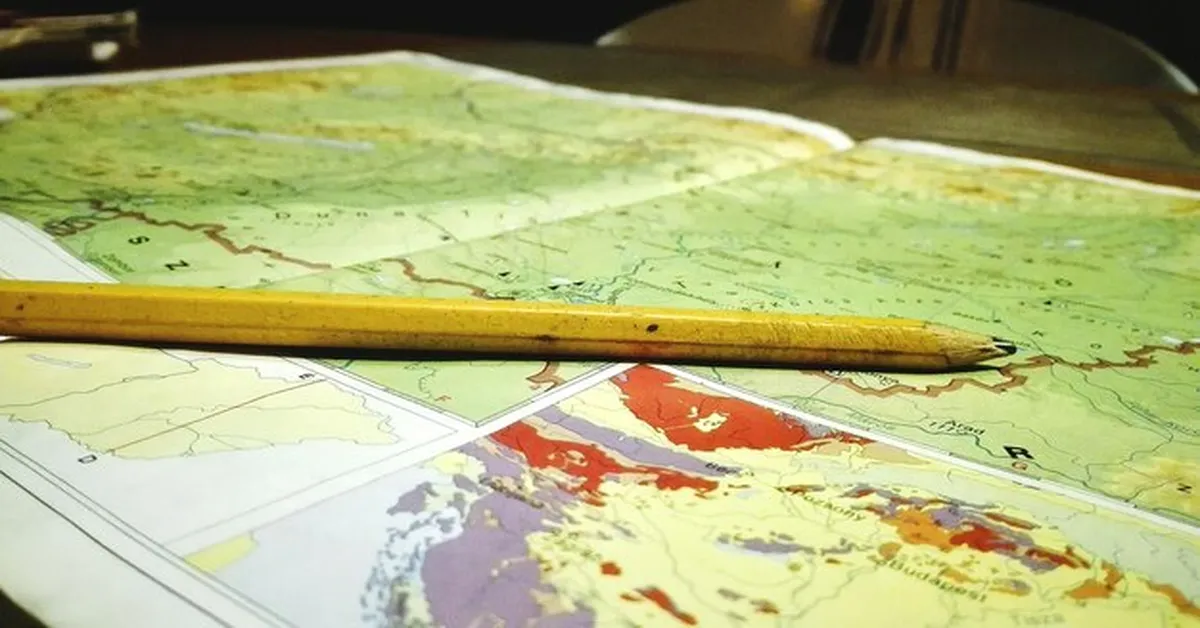The Middle-earth map is one of the most famous fantasy landscapes ever created, thanks to J.R.R. Tolkien’s masterpieces, The Lord of the Rings and The Hobbit. This richly detailed world, filled with sprawling mountain ranges, ancient forests, and legendary cities, has captivated readers and moviegoers alike. Whether you are a Tolkien enthusiast, a fan of the films, or a newcomer exploring Middle-earth for the first time, this guide will break down its geography, major locations, and historical significance.
Overview of Middle-earth
Middle-earth is the central continent in Tolkien’s fictional world of Arda, covering a vast and diverse landscape. While the books focus on the northwestern regions, Middle-earth is far larger than what is often depicted. It is home to numerous civilizations, kingdoms, and legendary creatures, from the noble elves of Rivendell to the dark armies of Mordor.
Major Civilizations in Middle-earth:
- Men – Dominant in Gondor and Rohan, but also found in Bree and the Southlands.
- Elves – Once rulers of vast lands, now mostly in Rivendell, Lothlórien, and Mirkwood.
- Dwarves – Found in Erebor, Moria, and other mountain strongholds.
- Hobbits – Residing peacefully in the Shire.
- Orcs & Goblins – Servants of Sauron, scattered across Mordor, Isengard, and the Misty Mountains.
Key Regions and Their Importance
The Middle earth map is divided into distinct regions, each with its own culture, history, and significance.
The Shire
- Home of the Hobbits.
- Located in Eriador, west of the Misty Mountains.
- Peaceful, rural, and largely untouched by war.
Rivendell
- Elven refuge led by Elrond.
- Hidden in the valley near the Misty Mountains.
- A key meeting place for the Fellowship of the Ring.
Mordor
- The domain of Sauron.
- Contains Mount Doom, where the One Ring was forged.
- Guarded by Barad-dûr and the fortress of Minas Morgul.
Gondor
- One of the last great kingdoms of Men.
- Home to Minas Tirith, the White City.
- Often at war with Mordor.
Rohan
- Known as the land of the horse-lords.
- Famous for the Rohirrim cavalry.
- The capital is Edoras.
Mirkwood
- A vast, dark forest home to Legolas’s people.
- Once known as Greenwood the Great before being corrupted by Sauron’s influence.
- Contains the stronghold of the Necromancer (Sauron’s former identity).
These are just a few key regions, but Middle-earth is filled with many more mysterious and legendary lands waiting to be explored.
Mountains, Rivers, and Forests
The geography of Middle earth plays a crucial role in its stories. Many important events occur around its mountain ranges, rivers, and forests.
Notable Mountain Ranges:
- The Misty Mountains – Runs north to south; home to Moria and Goblin Town.
- Ered Luin (Blue Mountains) – Located in the far west near the Grey Havens.
- Ered Nimrais (White Mountains) – Separates Gondor from Rohan.
Important Rivers:
- Anduin River – The longest river in Middle-earth.
- Brandywine River – Separates the Shire from the Old Forest.
- River Isen – Important in the battles of Rohan.
Legendary Forests:
- Fangorn Forest – Home of the Ents, led by Treebeard.
- Old Forest – Near the Shire, known for its eerie atmosphere.
- Lothlórien – The golden woods of the Elves, ruled by Galadriel and Celeborn.
The Journey of the Fellowship
One of the best ways to understand Middle-earth’s map is by following the journey of Frodo and the Fellowship.
Key Locations in the Journey:
- The Shire – Where the adventure begins.
- Bree – The first stop, where they meet Aragorn (Strider).
- Rivendell – Council of Elrond decides the fate of the Ring.
- Moria – A perilous journey through the abandoned Dwarven kingdom.
- Lothlórien – Elven sanctuary before heading south.
- Rauros Falls – Where the Fellowship splits.
- Gondor & Rohan – Battles of Helm’s Deep and Pelennor Fields.
- Mordor – The final destination where the Ring is destroyed.
By following this route on the Middle-earth map, fans can visualize the scale and danger of their quest.
How Tolkien Created the Middle-earth Map
Tolkien was not only a writer but also an avid cartographer. He carefully designed Middle earth’s map to reflect realistic geography, considering elements like:
- Mountain ranges naturally influencing travel routes.
- Rivers and water bodies acting as strategic points.
- Climate zones, from the frozen north to the arid lands of Mordor.
Tolkien’s detailed world-building ensured that Middle earth felt like a real place, rather than just a fictional setting.
Conclusion
The Middle earth map is a cornerstone of Tolkien’s world-building, offering readers a richly detailed, immersive landscape. From the peaceful Shire to the fiery depths of Mordor, each region holds legends, cultures, and historical depth that make Middle-earth feel like a living, breathing world.
Frequently Asked Questions (FAQ)
1. Is Middle-earth a real place?
No, Middle-earth is a fictional continent created by J.R.R. Tolkien, but it was inspired by real-world landscapes, especially in Europe.
2. Where can I find a detailed Middle-earth map?
Many versions exist, but official maps can be found in Tolkien’s books, fan websites, and collector’s editions.
3. What is the size of Middle-earth compared to Earth?
Middle-earth is roughly the same size as Europe, though its full dimensions are never officially defined.
4. Does Middle-earth include The Hobbit’s locations?
Yes! Locations like Erebor, Mirkwood, and Dale are part of Middle-earth and are central to The Hobbit.
5. Why does Middle-earth have such diverse landscapes?
Tolkien wanted Middle-earth to feel historically deep, so he modeled it after Earth’s medieval geography, creating different environments for different races.









